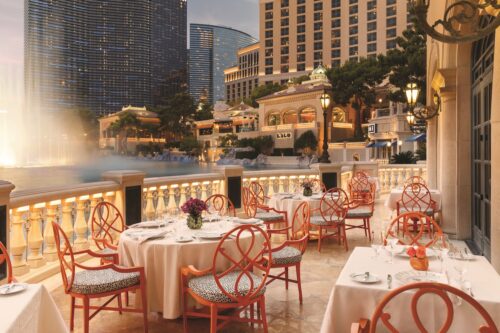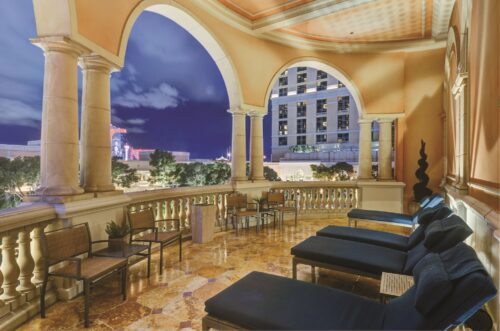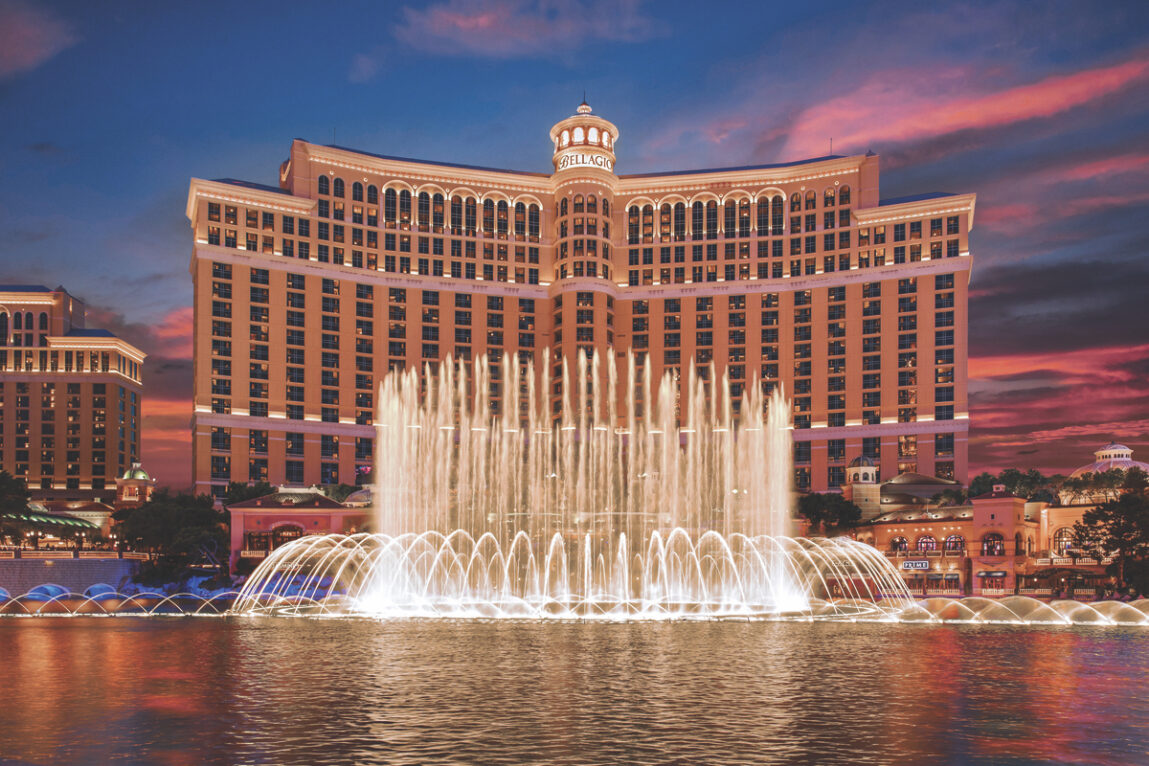In Las Vegas, the economic center of Nevada, one backdrop-like building complex follows the next. One of the most famous prototypes of commercially oriented architecture is the Bellagio Las Vegas Hotel and Casino.
Winston Churchill once said: »First man shapes space, then space shapes man.« A statement that also made the city in the Mojave Desert the subject of research by American architects Robert Venturi, Denise Scott Brown and Steven Izenour. In their 1972 book »Learning from Las Vegas«—now a key text and classic of architectural theory—they interpret the desert city as the epitome of commercially oriented American urban planning and development. In doing so, Scott Brown, Venturi and Izenour also attempt to conclusively comprehend social issues—an undisputed fundamental component of the Las Vegas system.
City of Entertainment
One of the most famous buildings on the Las Vegas Strip—the Bellagio Las Vegas—is a good example of the impact this has on hotels in a city that is geared towards round-the-clock entertainment.
It is no surprise that the multifaceted social aspect plays a key role in modern hotel operations. In the context of a mega hotel like the Bellagio, however, it is an extremely complex construct that goes far beyond friendly, attentive staff. This must be able to move flexibly through the entire microcosm and, depending on requirements and design, be adapted to the most diverse needs, social backgrounds and expectations. This creates a very complicated interaction between the business and its visitors, between space and psyche, which calls for a regulated system, for example by means of exterior and interior design.
A stage for everyone
The Bellagio is an impressive building, with the main façade arranged in a semi-circle around a three-hectare lake—the Fountains of Bellagio—which at certain times throughout the day puts on spectacular water shows. Inside, visitors find themselves in what feels like a self-contained ecosystem that is seemingly capable of fulfilling all their needs. Such a complex, in which people with the most diverse requirements but similar concerns come together, requires not only a solid construction, but above all many well thought-out control mechanisms tailored to the physical and psychological aspects of the guests.

At the lowest level of the Bellagio in a casino area of 10,800 m² that operates around the clock, this includes not only the gigantic ventilation systems that filter the air in the room, the targeted use of light or the muffling of ambient noise by means of carpets, these are just some of the effective little tricks to turn time upside down.
ON EVERY LEVEL
Those who experience a lot also have to process a lot and so people’s needs are being channeled by letting them flow from the bottom to the top of the building. In this sense, the upper levels of the Bellagio microcosm offer a place of retreat, if used as such.

Light again plays a central role and influences activity vs. relaxation, promoting a day and night rhythm in an ambience where the boundaries are often fluid. In addition to large floor-to-ceiling windows, the monumental casino resort offers its visitors an impressive 3,950 elegantly furnished rooms, including luxurious marble bathrooms and many other modern amenities. The suites are located on the highest levels of the hotel, offer a private elevator, separate sleeping and living areas, a whirlpool bathtub and a butler service, all other wishes can certainly be fulfilled after a direct conversation. Of course, the service reflects the budget of the guests, although it should be noted that the Bellagio also offers people with average financial means more than initially expected because very customer’s satisfaction pays off and in the case of Las Vegas, this statement can be taken literally.

It seems almost unnecessary to mention the extensive gastronomic offering, which, in addition to bars geared towards entertainment and amazement, also includes stylish, international restaurants, cafés and what feels like countless other »lower-threshold« options for the city’s diverse clientele.

In an unorthodox desert metropolis like Las Vegas and the example of the Bellagio Las Vegas Hotel and Casino, much can be seen of the psychological power and effect of architecture as a starting point for further purpose- and profit-oriented design processes. What emerges is an adventurous form of so-called human-centered architecture, in which people are no longer the focus, but instead become part of a beautiful overall illusion that has always brought so many visitors to Las Vegas and the Bellagio. [DM]

